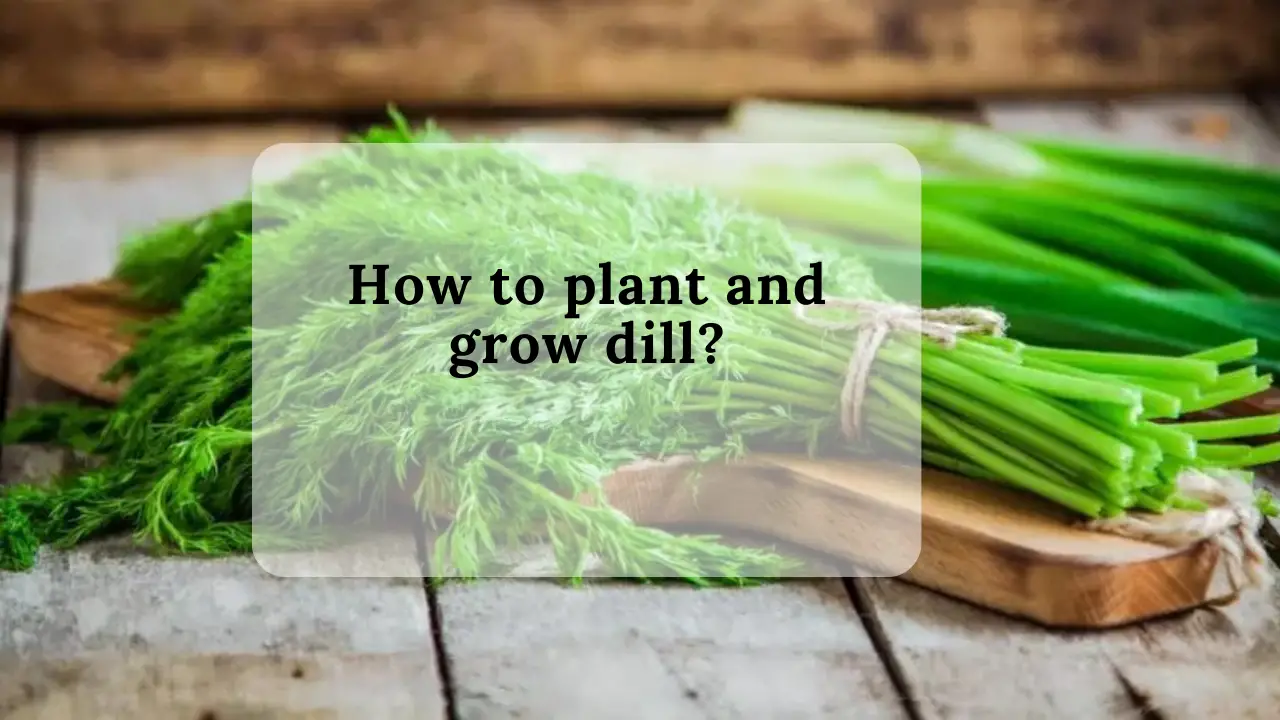A plant with a sweet anise flavor
An aromatic plant with an anise flavor, dill is often used to flavor dishes with sauces, fish or vegetables. Its very fragrant flowers delicately decorate balconies and gardens, provided you give this plant the right care!
How to plant and grow dill?
The characteristics of dill
- Type: vegetable plant
- Height: up to 1m50
- Flower color: yellow
- Desired exposure: sunny
- Soil type: normal, well drained
- Foliage: deciduous
- Maintenance: easy to maintain
- Sanitizer: no
- Diseases and pests: aphids
- Varieties: anethum graveolens

Origins and particularities of dill
Dill (anethum graveolens) has its origins in the Middle East. It is often called “bastard fennel” because of its aniseed taste. Its green and bluish leaves are similar to those of fennel.
Its bushy habit and yellow and green flowers make it a very interesting ornamental aromatic plant in the vegetable garden. It is also these flowers which produce, at the end of the season, the aromatic seeds which are light brown in color.
Little tip for scenting your cupboards: dried dill leaves can subtly scent your laundry.
Dill essential oil contains components such as carvone, limonene and eugenol, which contribute to its distinctive aroma.
Planting dill
Dill is one of the simplest aromatic vegetable plants to grow .
In a sunny spot in the garden, simply plant dill seeds from spring to early summer. The soil must be loose, light and well drained. Dill particularly appreciates intense sun and high heat. Its culture is particularly adapted to the regions of the South of France.
It is possible to plant dill in pots, in beds or even in the vegetable garden. In the latter case, it helps naturally repel aphids.
You will then have to think about thinning the dill seedlings as soon as the first shoots emerge. Thus, cultivation will be easier, because it is more airy.
Growing and caring for dill
Growing dill is quite easy. Aside from regular watering when seedlings are growing, dill does not need a lot of water except in drought . Weeding your foot can also help it grow better. Also remember to mulch the base to keep the freshness of the soil intact.
Cut the leaves regularly , just before flowering. These leaves are the most aromatic.
Dill harvest
Harvesting Leaves: Dill leaves can be harvested as they reach a sufficient size. You can cut them with scissors, leaving a few inches of stem to encourage new growth.
Seed Harvesting: Seeds are ready to harvest when the flowers begin to dry. Cut the stems whole and hang them upside down in a dry, well-ventilated area. Once the stems are completely dry, shake them to release the seeds.
Dill Diseases and Pests
Diseases :
- Powdery mildew is a fungal disease that appears as a powdery white coating on the leaves. For prevention, ensure good air circulation by properly spacing the plants. If infected, treat with a mixture of water and milk (1 part milk to 9 parts water) or baking soda solution.
- Root rot: It can be caused by soil that is too wet. Make sure the soil is well drained and avoid overwatering.
- Downy mildew is a fungal disease that causes yellow spots on leaves. Use copper-based treatments, such as Bordeaux mixture, to combat downy mildew.
Pests :
- Caterpillars can devour dill leaves. Use natural methods like hand picking of caterpillars or neem solutions to control them.
- Aphids can attack dill. Encourage the presence of predatory insects like ladybugs, or use a jet of water to eliminate them.
- Slugs and snails: These creatures can damage young dill plants. Use physical barriers like crushed eggshells or beer traps to deter them.
- Thrips can cause damage by sucking sap from leaves. Use natural predators like predatory bugs or essential oils like neem oil.
- Mites can be controlled by encouraging their natural enemies, such as predatory mites, or by using insecticidal soap.
Dill Companion Plants
- Cabbage: Dill can benefit cabbages by repelling cabbage moths. Avoid planting dill near parsley, as these two herbs can inhibit each other’s growth.
- Carrot: Dill can help repel aphids, which can sometimes be a problem for carrots.
- Cucumber: Dill can act as a natural repellent against cucumber pests, such as aphids.
- Tomato: Dill can help repel tomato aphids and caterpillars. However, avoid planting dill too close to basil, as these two plants may have similar nutrient needs.
- Broccoli: Dill can benefit broccoli by repelling certain pests like cabbage moth.
- Bean: Dill can help repel pests that can affect beans.
- Strawberry: Some people suggest that dill can help ward off insects that attack strawberries.
Uses of dill
- Cooking: Dill leaves are often used to flavor dishes, especially those based on fish, seafood, vegetables, and soups. Dill seeds are used as a spice in breads, marinades, pickles and other dishes.
- Digestion: Dill is traditionally used for its carminative properties, meaning it can help relieve digestive issues such as gas, bloating, and abdominal cramps.
- Nausea relief: Dill may have anti-nausea properties. It is sometimes recommended to relieve mild nausea, whether due to motion sickness, pregnancy, or other causes.
- Anti-inflammatory properties: Certain compounds in dill, such as flavonoids, give it anti-inflammatory properties, which may benefit general health.
- Antimicrobial properties: Dill essential oil has antimicrobial properties that may help fight certain bacterial infections.
- Blood sugar regulation: Preliminary studies suggest that dill may have beneficial effects on blood sugar regulation, which could be helpful for people with diabetes or those looking to maintain stable blood sugar levels. .
- Immune Support: The antioxidants found in dill can help strengthen the immune system by neutralizing free radicals.
- Diuretic Properties: Dill has diuretic properties that can help stimulate the elimination of toxins from the body.

